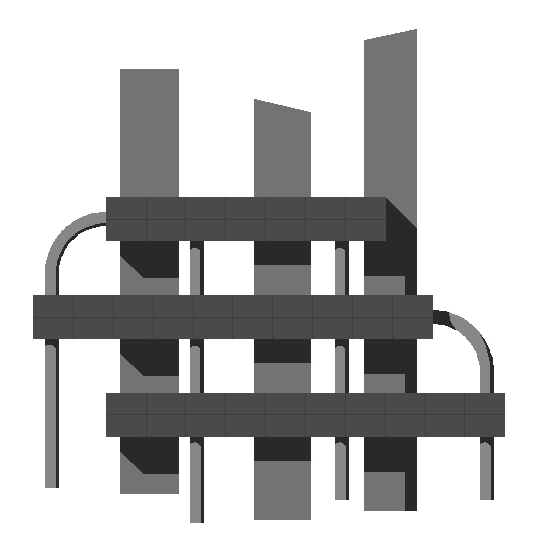 |
Docente/i:
Armando Buttafava
Denominazione del corso: Materials chemistry
Codice del corso: 500953
Corso di laurea: Ingegneria Edile-Architettura
Settore scientifico disciplinare: CHIM/07
Crediti formativi: CFU 6
Sito web del corso: n.d.
Obiettivi formativi specifici
Programma del corso
After a recall of basic principles concerning the crystalline state, bonds and phase diagrams, the program surveys the major classes of materials of interest for the engineering course, with specific attention to the chemical and physical structures and properties-structure relationships
Introduction to Material Chemistry
The crystalline state:
- Type of bonds and crystals (covalent, molecular, ionic, metallic);
- Crystallografic systems; unit cells and Bravais lattices; the Miller indexes
- Close packing structures; ionic structures; covalent structures; metal structures; metal oxide and mixed metal oxide structures.
- Crystal imperfections: point defects; edge and screw dislocations; grain boundaries; stalking faults
- Physical properties of crystals: melting point, hardness, cleavage and fracturing, color; properties resulting from crystal anisotropy, piezolectricity, ferroelectricity, magnetism
- Crystal growth techniques
Phase diagrams
- Single and binary state diagrams: eutectic, solid solution; partial solid solution; with formation of compounds with congruent and incongruent melting point;;
- Ternary diagrams: methods of representations
Cementitious materials for structural applications
- silicates, aluminium silicates (nesosilicates, inosilicates, tectosilicates, fillosilicates, clay and caoline)
- manifacture of Portland cement
- nature, relative abundance and structure of Portland cement mineralogical constituents
- the SiO2/CaO state diagram
- mechanism of hydration and hardening of the Portland cement
- corrosion of the cement by chloride, sulfates and pure water
- blast furnace cement, pozzolanic cement, white cement
- relationship between the cement composition, the corrosion resistance and the heat release rate
- the corrosion of iron in reinforced concrete
- wall surface treatment for inducing antibacterial, hydrophobe/hydrophil, thermoacustic insulation, photocatalitic degradation of pollutants activities.
Glasses and Ceramics
- sol gel processes;
- glasses : SiO2 based glasses, modulation of the composition according to the use; metallic glasses
- oxide ceramics;
- non oxide ceramics
Metals
- mining and processing of metals
- powder metallurgy
- Iron-carbon alloys
- Feγ, Feα, Feδ, cementite, austenite, ledeburite, martensite, perlite
- The iron-carbon phase diagram:
- Thermal treatment and hardening mechanism of steels: the TTT diagrams, phase structures and microstructures following from the different thermal treatments; effects of alloying elements; surface treatments
- Stainless steels
- Non ferrous metals and alloys:
- Aluminum alloys,
- Refractory metals
- Shape-memory alloys
- Metal surface treatment for corrosion resistance
- Magnetism in metals and alloys
Semiconducting materials
- band diagrams for conductors, insulators, intrinsic and extrinsic semiconductors
- Silicon based applications
- Silicon wafer production
- Field-effects transistors
- Methodologies for integrated circuit fabrication: photolitography, electron-beam lithography, X-ray lithography, thin-film deposition ( Chemical Vapor Deposition, CVD)
- Light Emitting Diodes ( LED)
- Thermolelectric materials (TE)
- Photovoltaic Solar Cells
Polymers
- Classification and nomenclature
- Polymerization mechanisms
- Structure –properties relationships: Average molecular weights; crystalline and amorphous polymers; microstructures; glass transition and melting temperatures (Tg, Tm); chain flexibility; influence of different skeletal elements and backbone; effects of different side groups; effect of crosslinking
- List of the main classes of polymers of technical relevance: monomers, repeating units, Tg, Tm, mechanical strength, major applications
- polyolefines; vinyl polymers; Polyacrylates; Polyesters ; Polycarbonates;Polyamides (aliphatic and aromatic); Polyethers; polyuretanes; polyimides (Kapton)
- Polyetheretherketoenes ( PEEK) ; Polysiloxanes ( silicones)
- Polytetrafluoroethylene (Teflon); Polytioethers; Epoxyresins; Carbon fibers; Synthetic and natural rubber; Conductive polymers; Polymer composites
- Polymers for special applications:; thermoacustic insulation; photochromic and thermochromic polymers
- Polymer additives: inorganic and organic fillers; Plasticizers; Flame retardants; Stabilizers against photo and thermoxidative degradation
Topic : Rubber technology in tyres manufacturing (by Pirelly Tyres-Milano)
woods and wood composites
Introduction to nanomaterials
Prerequisiti
Tipologia delle attività formative
Lezioni (ore/anno in aula): 0
Esercitazioni (ore/anno in aula): 0
Attività pratiche (ore/anno in aula): 0
Materiale didattico consigliato
Bradley D. Fahlman. Material Chemistry. Springer 2008.
Harry R. Allocock . Introduction to Material Chemistry . Wiley 2008.
Modalità di verifica dell'apprendimento
|




![]()




![]()